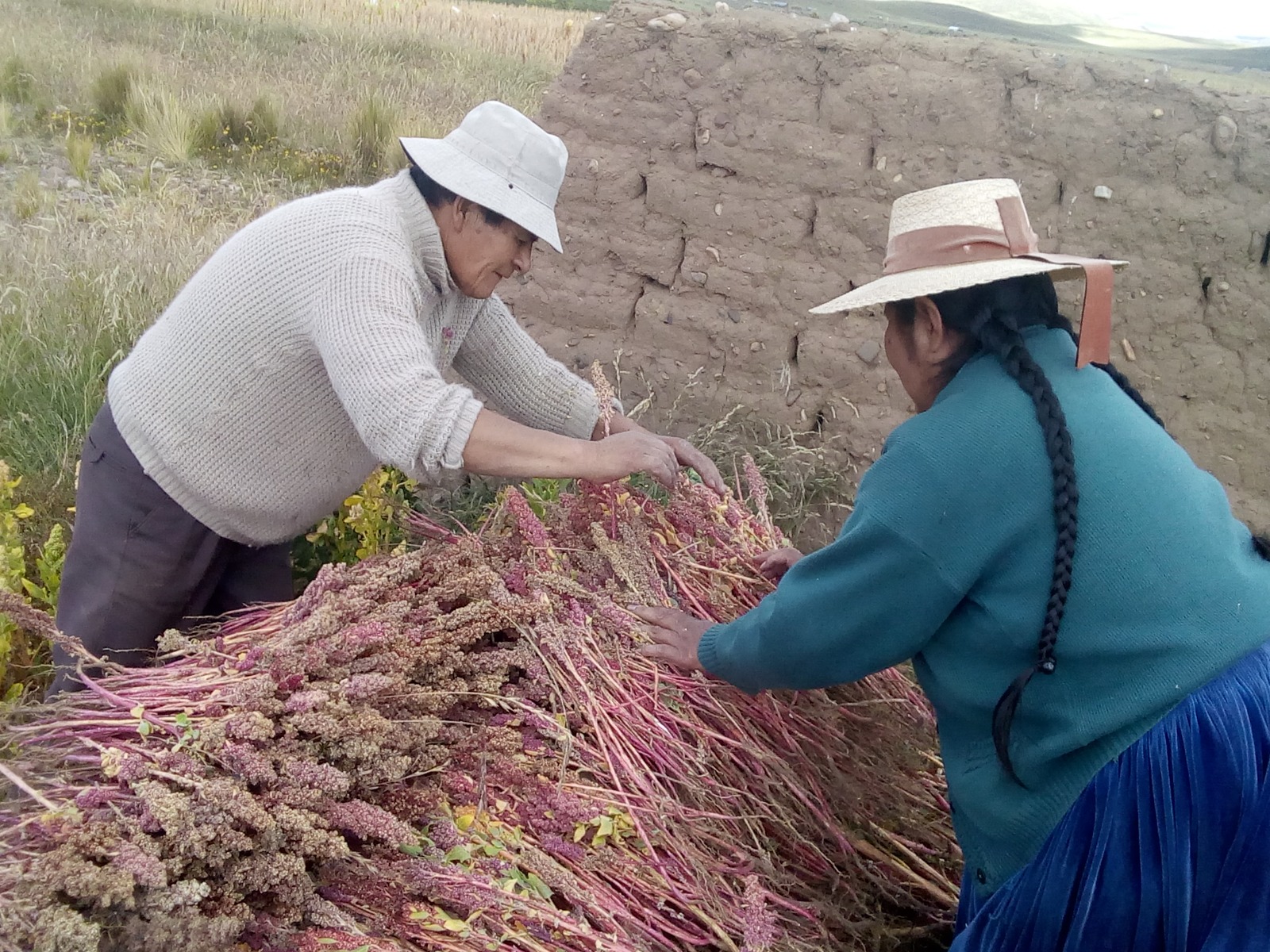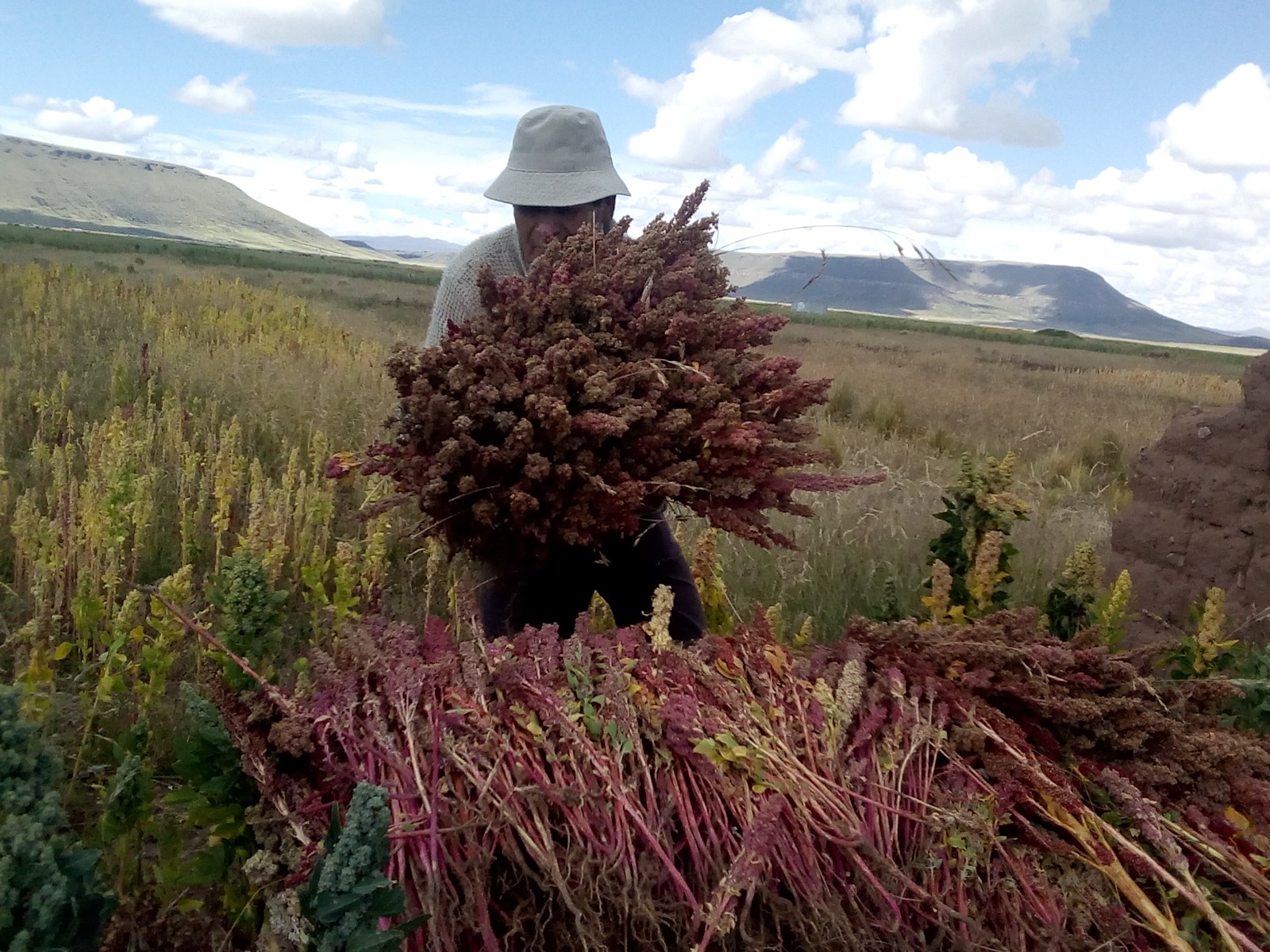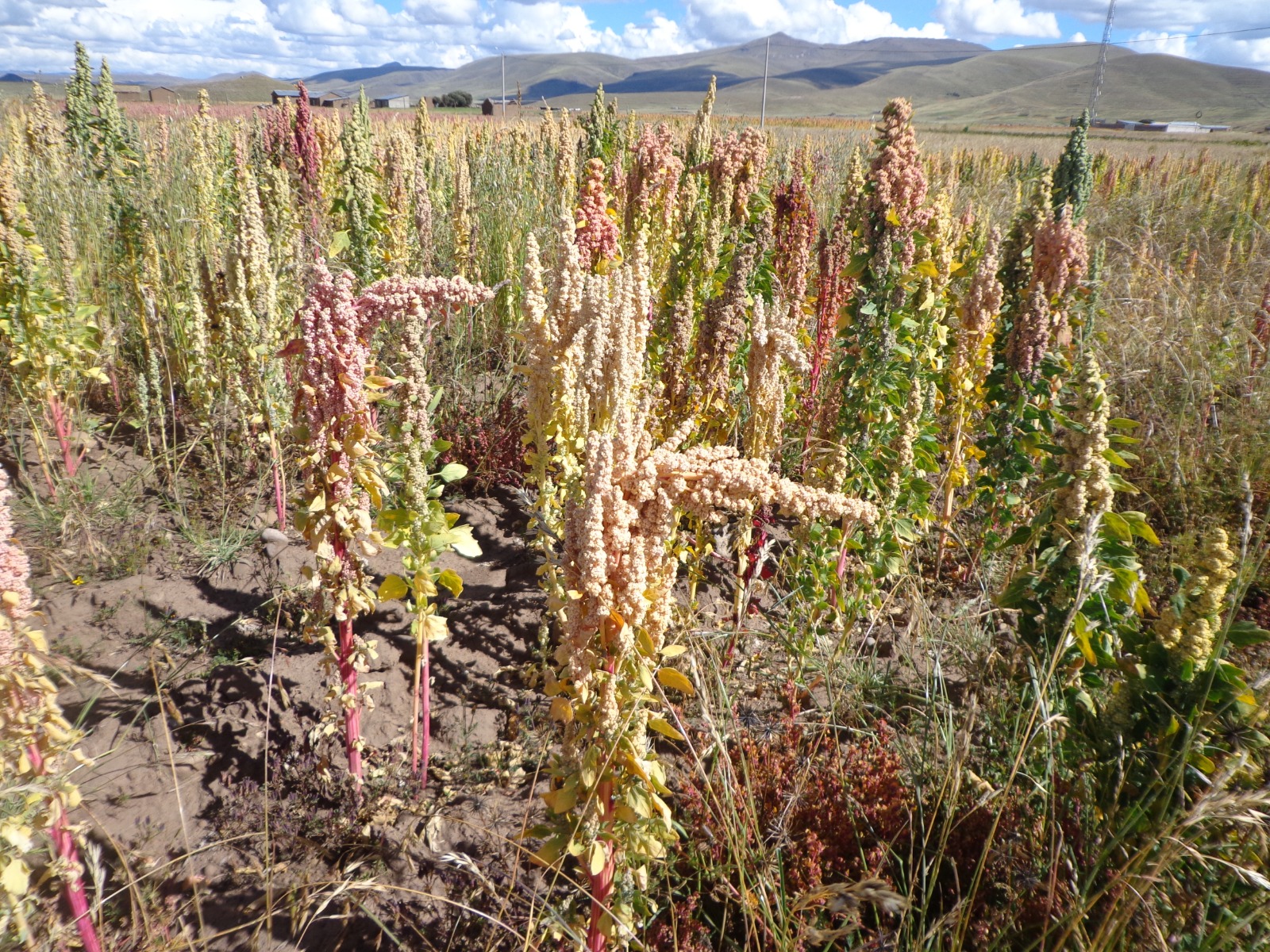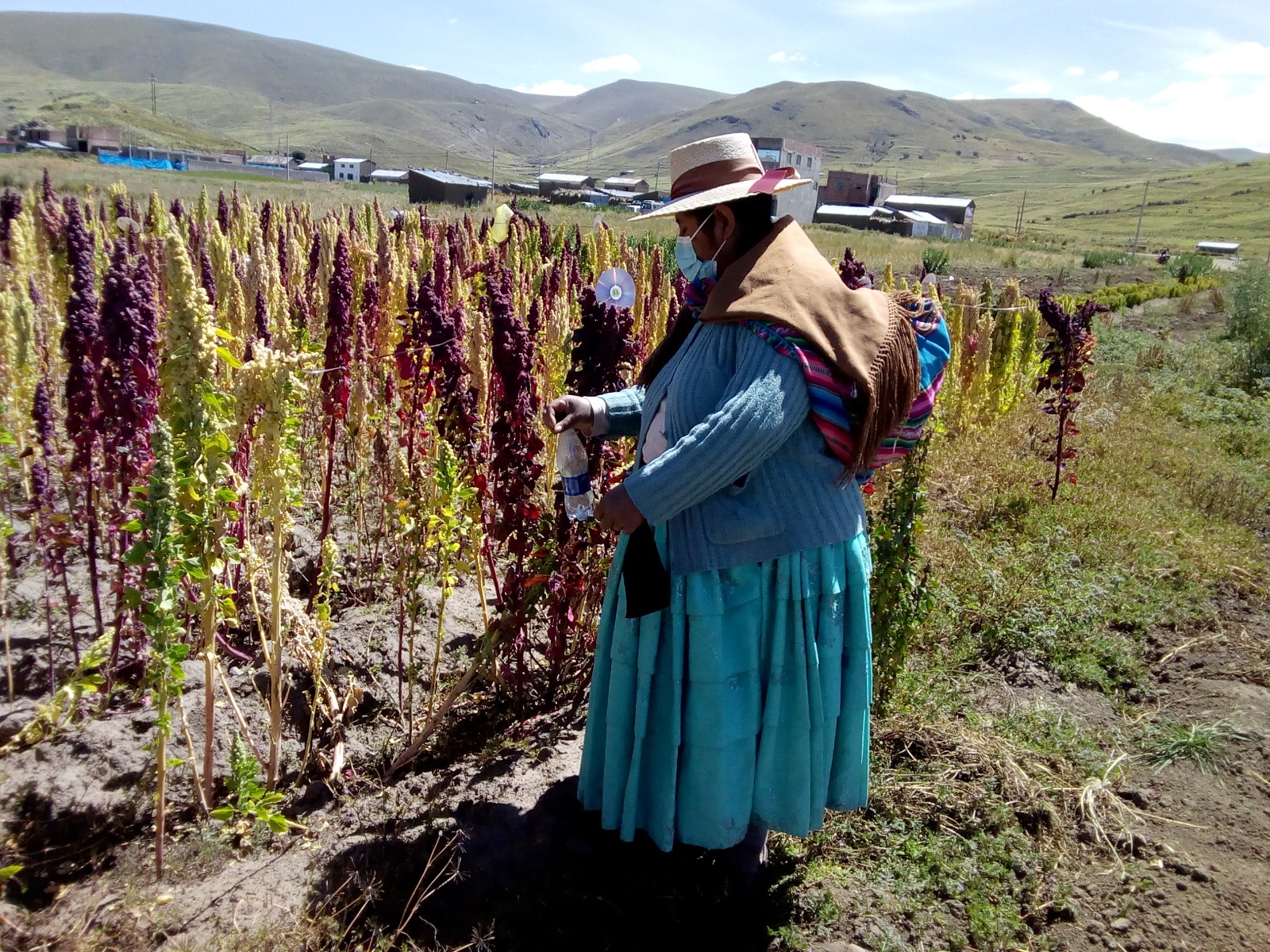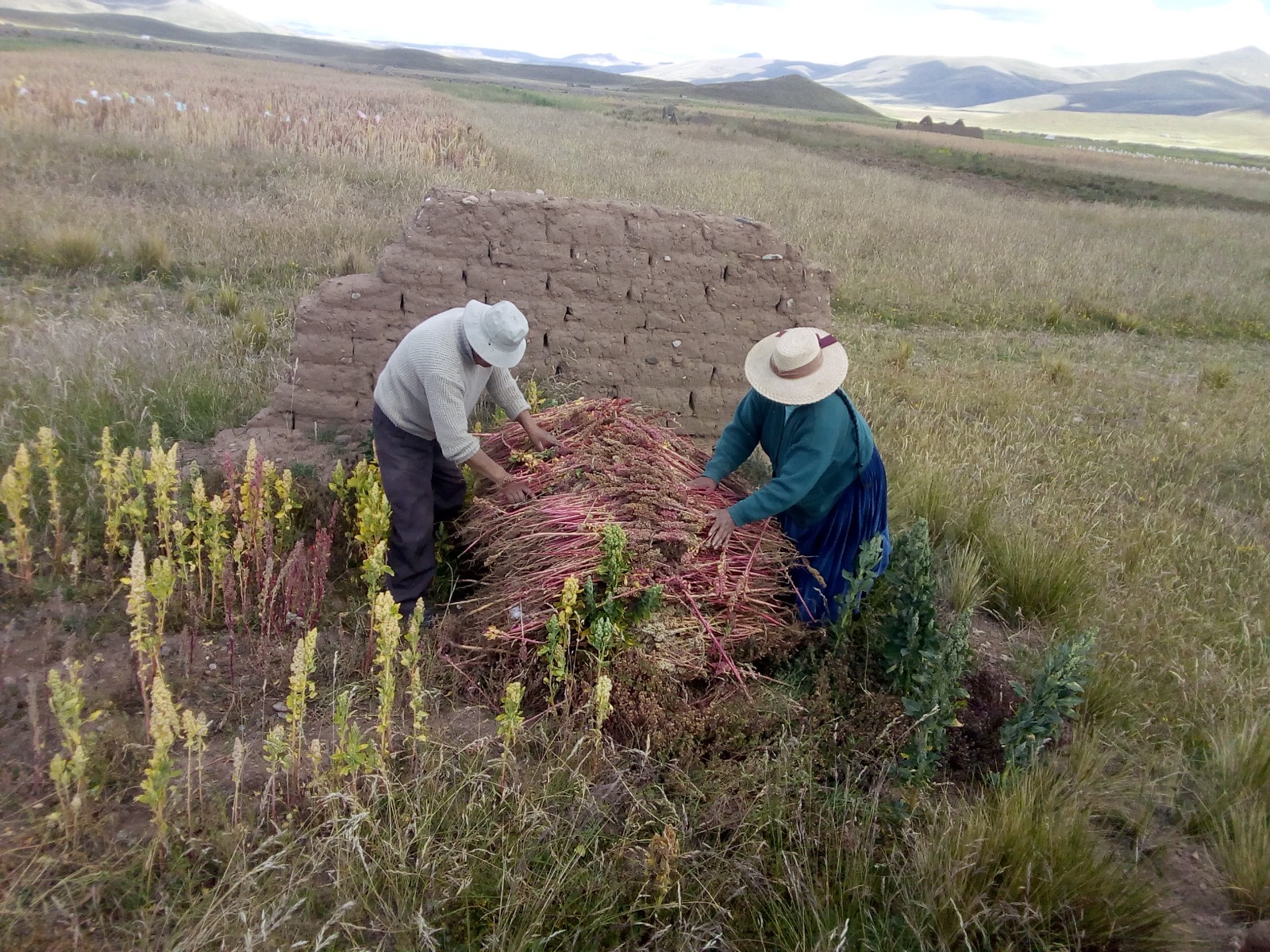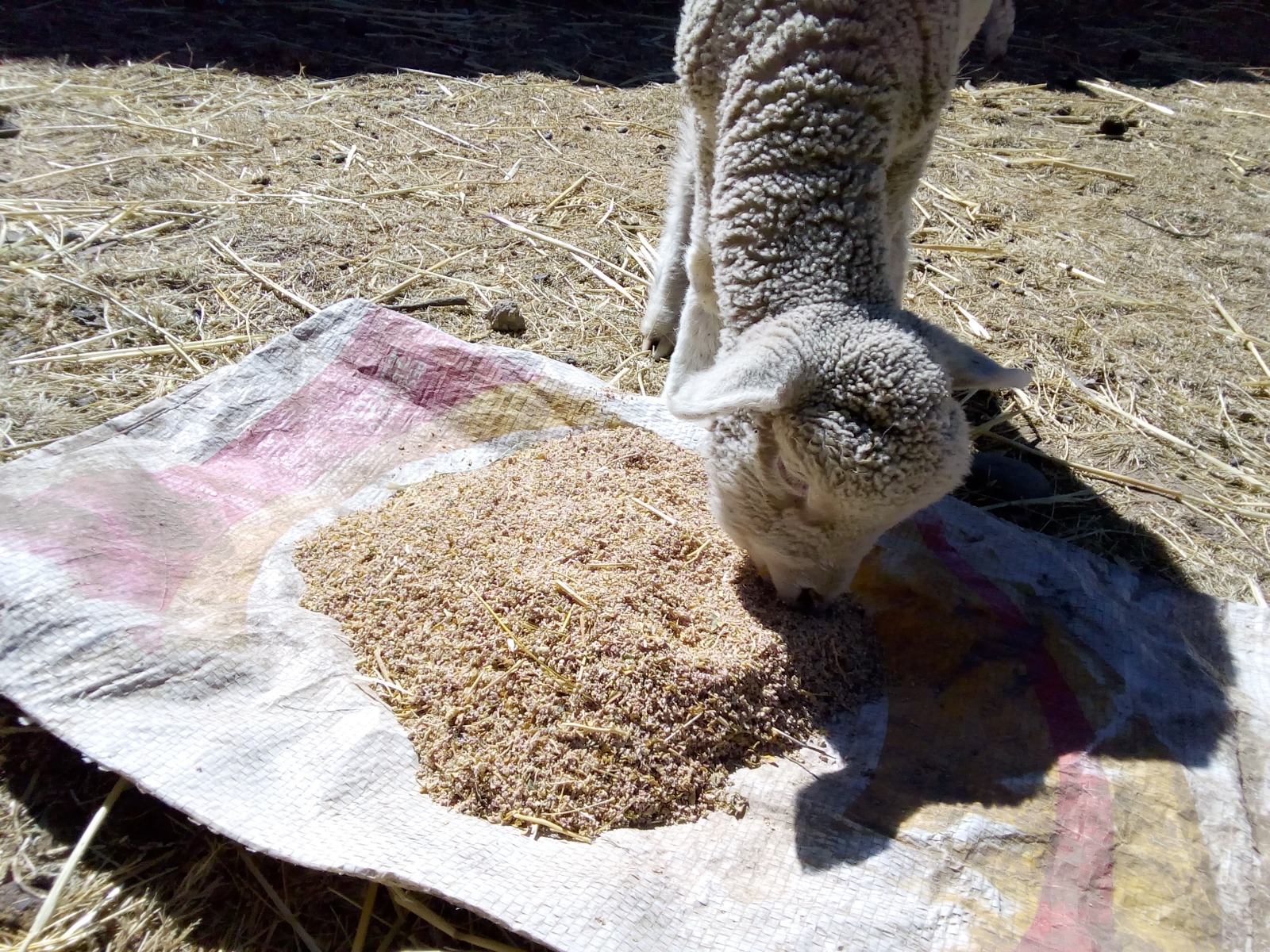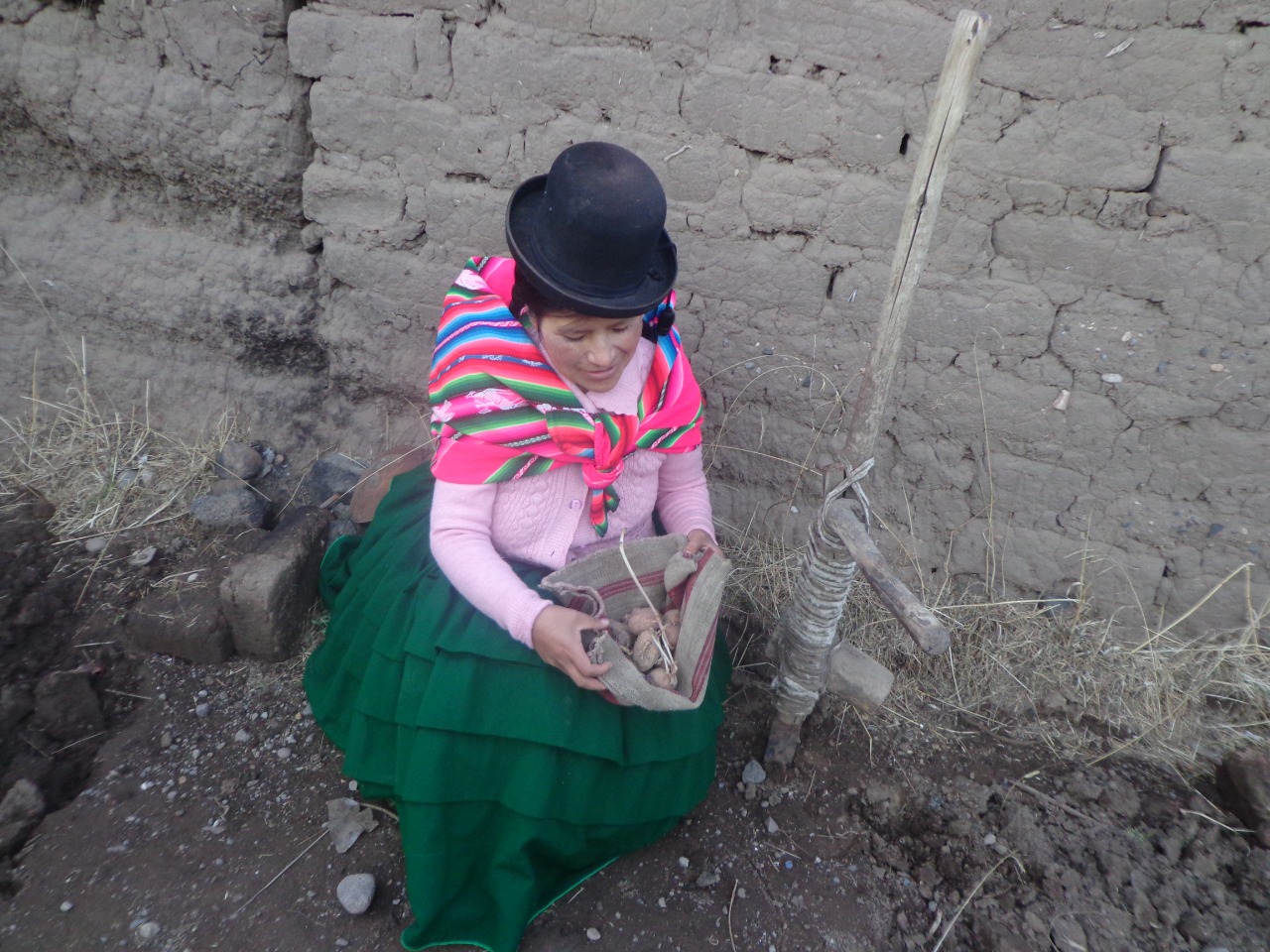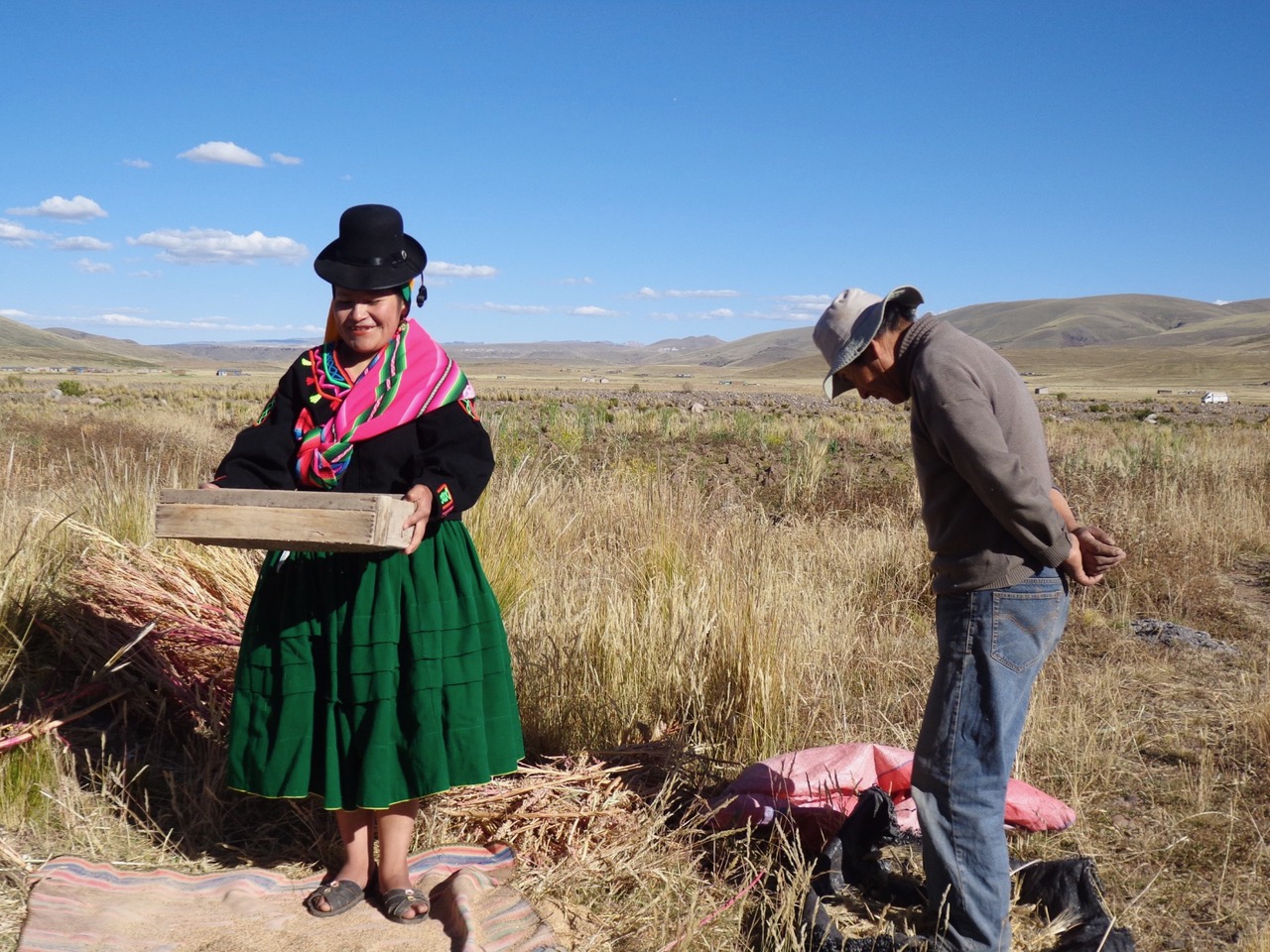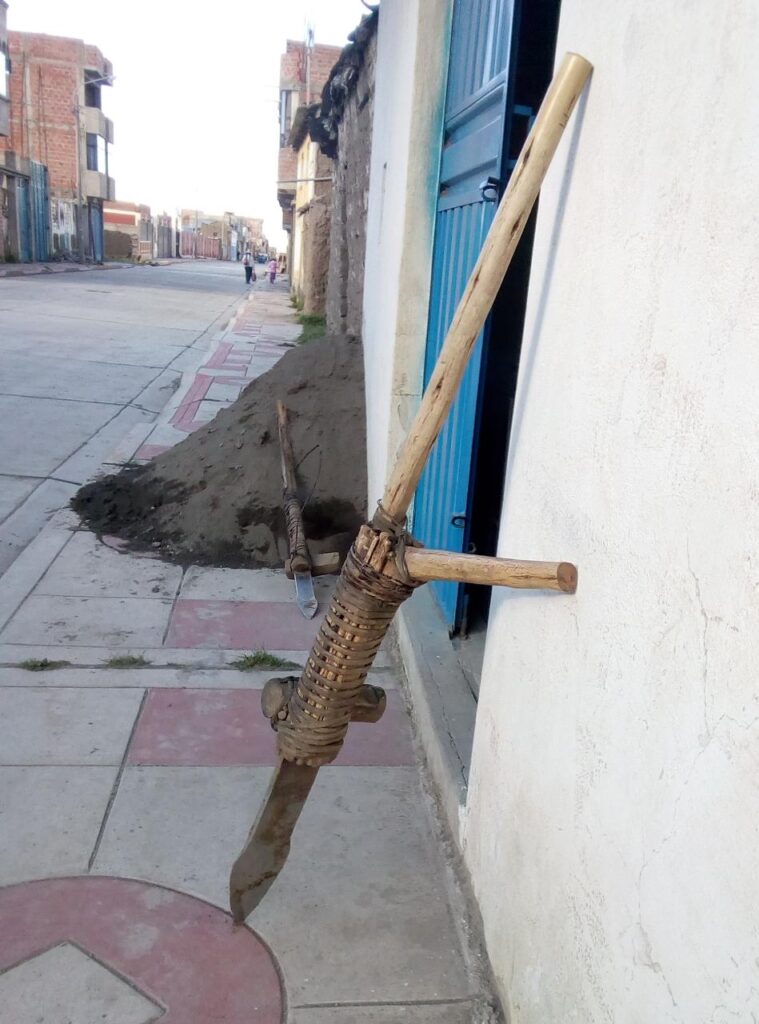Traditional Agriculture
Agricultural activity in the highlands is carried out during the following seasons: Jallu Pacha (season of heavy rains), Juyphi Pacha (season of low temperatures) and Awti Pacha (season of strong winds or shortages). Families in the altiplano eagerly await to receive the blessing of the Pachamama: with the first rains, around August 30th, families start sowing quinoa, oca, and broad beans. Another indicator for agricultural activity are the signs. They allow farmers to interpret how the behavior of the climate will be for the agricultural cycle. For example, the rains were absent on August 30 of this cycle, so it can be deduced that it will be “Taypi Mara” (the second harvest will be good). Other signs were the sankayu flower, the flower of kariwa, the eggs of the lekecho bird, and the howl of the fox.
The plowing of land (qhulliña) is the activity that marks the beginning of the entire agricultural production cycle. To do so, families choose the land where they will plant; either their own and/or rented land. They then carry out the seed selection (jathachaña) to carry out the sowing (phawaña in the case of andean grains and sataña in the case of tubers). Seeds sowing is accompanied by guano (wanuña) in which llama, sheep or cow dung fertilizer is applied into the furrows. During the growth season of the potato plants, two “aporques” (providing soil to the stems) are carried out, which is called thumiña and kawaña.
During the carnivals, families look forward to the first fruits. With different ceremonies and rituals they receive and give thanks to the pachamama for the blessing of food. This begins the first harvests called llamayuña (potato digging) or apaquipaña in the case of andean grains. At the end of the harvest it is necessary to perform the threshing of quinoa, cañihua, barley, rye and broad beans, which is called jawkaña. In the case of tubers such as potatoes, this process ends in the production of chuño for later storage, an activity that in aymara we call chu’ñuña.


